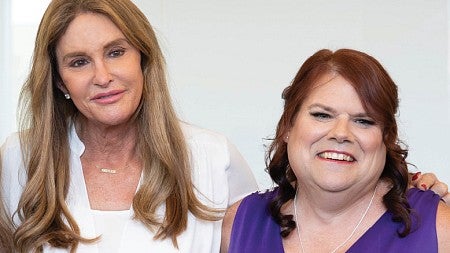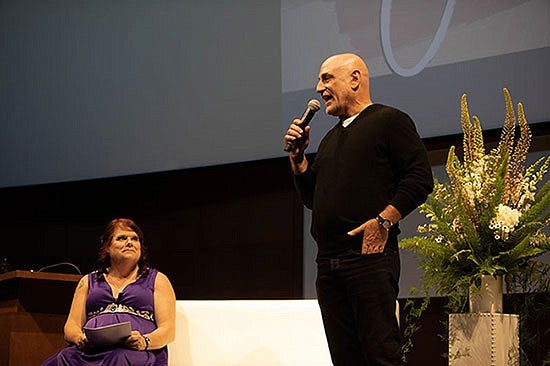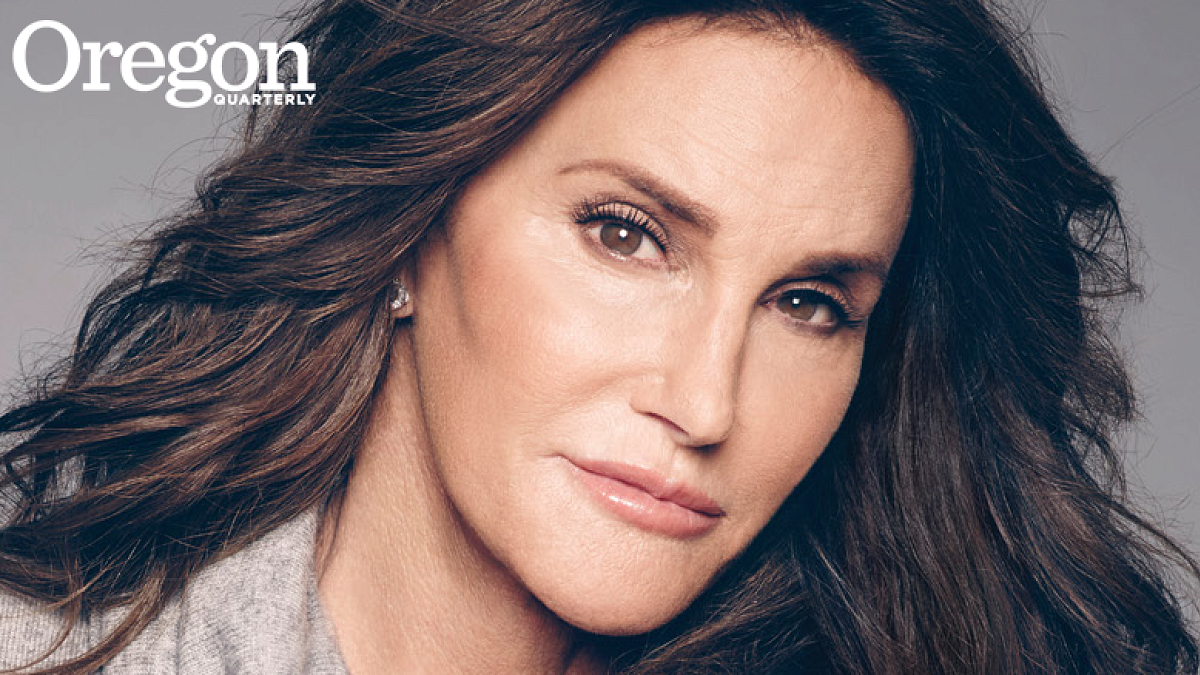I’d like to tell you a story. As a doctoral student and instructor in the School of Journalism and Communication (SOJC), I proudly tell everyone that our school is where great storytelling begins. And I have a great story to share.
It’s the story of a transgender woman and her very public transition. A story of acceptance by some and mockery by others. It’s a story of self-awareness, admitting you’ve been brought to your knees—and then standing up again. It’s Caitlyn Jenner’s story—and it’s mine.
It was Jenner’s story, of course, that hundreds of UO students, faculty, and staff heard in May, when the SOJC hosted “On Her Own Terms: An Evening with Caitlyn Jenner and Alan Nierob.” Although I emceed that night, those attendees were awaiting Jenner’s appearance with Nierob, her communication strategist and president of Rogers & Cowan, an entertainment public relations and marketing agency. They came to hear the story of one of the great public relations campaigns of our times, recounted by those at its center.

Jenner enlisted Nierob, who had been her friend for decades, to help take back her narrative from the gossip rags. A few months after Nierob enacted his strategic communication plan, Jenner was interviewed on ABC by Diane Sawyer, written about by Pulitzer Prize-winning journalist Buzz Bissinger, and captured on film by celebrated photographer Annie Leibovitz. One of those photos became the iconic cover of Vanity Fair.
This journey was no accident. It was carefully planned, from the decision to educate America about what it means to be transgender, right up to Jenner’s speech as winner of the Arthur Ashe Courage Award at the 2015 ESPYs, the sports-media awards celebration hosted by ESPN.
At the UO, Jenner and Nierob discussed how they planned these efforts to tell Jenner’s story “On Her Own Terms.”
I had already heard the talk two years earlier, during a crisis communication class Nierob presented at the SOJC. But hearing Nierob explain again how and why they made the choices they did, our students learned that Nierob and Jenner had accomplished more than just taking a celebrity from media mockery to heroine in the headlines. What they accomplished was no less than, as author Mimi Marinucci put it, “capturing the attention of people who might otherwise have had very little exposure to trans identity.”
To this day, people tell me that Jenner’s story, whether they heard it in an interview, a speech, or a reality TV show, is the means by which they have come to understand and respect the unique lives of transgender people.
Nierob and Jenner didn’t just fill a knowledge gap, according to Lawrence Wallack, a professor of public health at Portland State University; they helped give transgender people more authority.
That may sound like a lot to attribute to one woman and one man with a PR plan. But, although the idea of a transgender woman seems more common today, many Americans at that time had no idea what the word “transgender” even meant. The fact that I no longer have to start conversations about who I am by explaining what I am empowers me in a way that may be hard to imagine if you’ve never lived with that burden.
This alone makes Jenner’s story worth telling, and I’ve yet to meet one member of the audience who came away from the SOJC event disappointed. Even for those who may have questioned why Jenner “had” to come out in such a public way, I think it was clear by the end why she made the choices she did.
That’s not the lesson I took away from that night, however—not because it wasn’t valuable, but because I was there for another reason entirely. I was there because of the power of four simple words: “on her own terms.” And that’s where my story begins.

I was the school’s “transgender poster child,” a term I still cherish, in my own way. I also, however, became the subject of criticism. I was told my transition was nothing more than a plea for attention, that my repeated media exposure was not about acceptance, but about arrogance. It hurt—and it stuck with me.
The truth is that I came out in a public email because it had the virtue of being efficient. I no longer had to tell dozens of people, one by one, that I was transgender. I no longer had to look in their eyes and see those eyes flick away. I no longer had to hear the words coming out of my mouth and hear nothing but silence in return. I’d done that, and it was miserable.
So I did what I do best: I wrote down my thoughts. Deliberative, reasoned, and even a little poignant, all sent to every faculty member and grad student in the SOJC in seconds. I was done.
I also felt guilty the moment I did it. And I kept feeling guilty with every interview I did, every photo someone snapped of me—until I met Nierob. We had breakfast one morning in the SOJC before he taught that 2016 class in crisis communication. He told me everything I’ve already told you, and he showed me something else.
In academia there is something called the “agentive self,” the idea that each person is capable of advocating for themselves. There are many ways to do that: politicians speak, athletes can kneel, the common person might march down a street with a sign. I tell stories, and by doing so, I have advocated for myself. I’ve controlled my story. No one else can take it from me, I have made it my own.
That’s what Jenner and I have done. Motivated by our ability to use media, we told the story we wanted to tell, and in doing so we empowered ourselves. Jenner had Nierob, the professional with every media tool known at his disposal. Me? I’ve been a reporter, teacher, stand-up comedienne, ice-show performer, and collegiate journalism instructor. I used every one of those experiences, and a few other skills I learned along the way.
That’s what I learned that night, and I hope everyone else in the audience did, too: telling stories can literally change lives—including your own.
—By Bethany Grace Howe
Bethany Grace Howe is a doctoral student in the School of Journalism and Communication.


